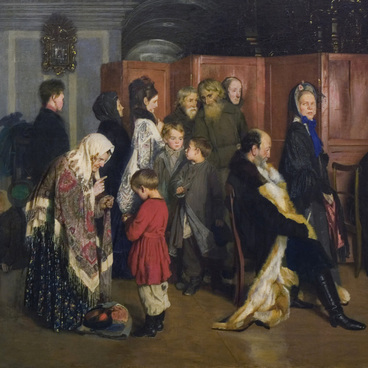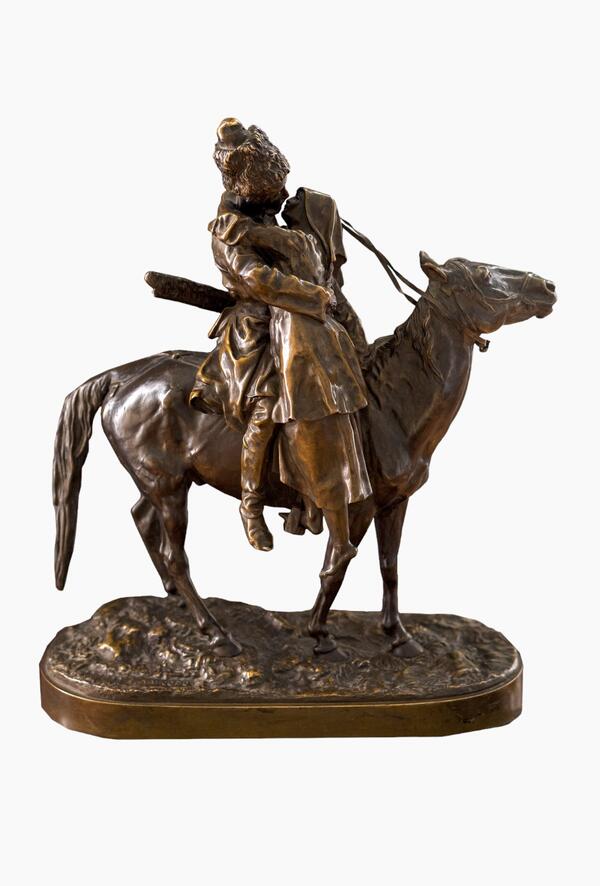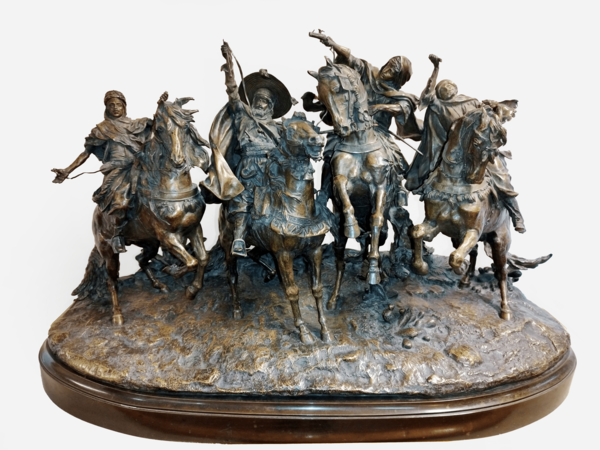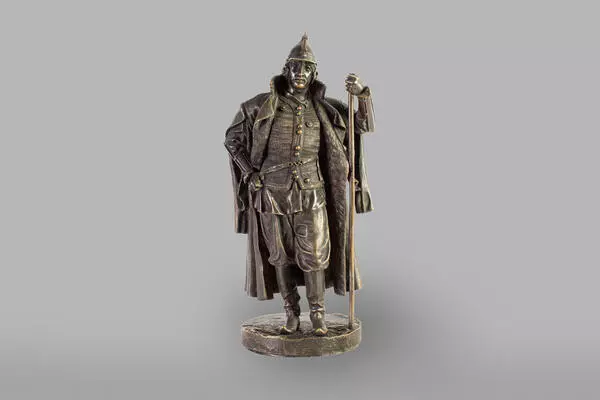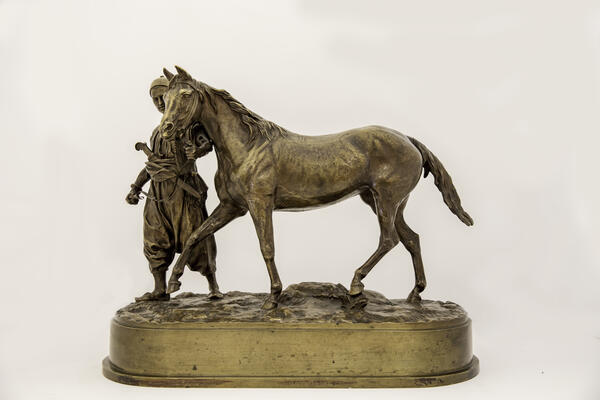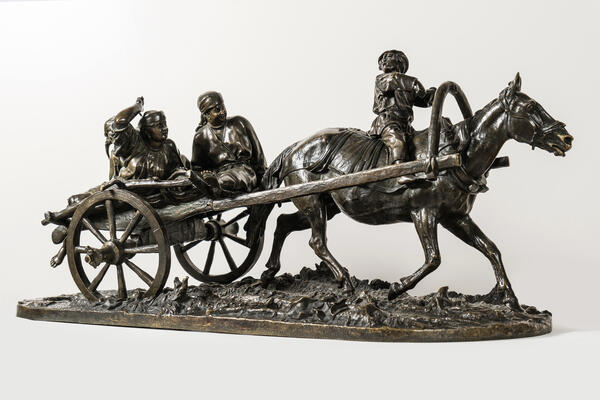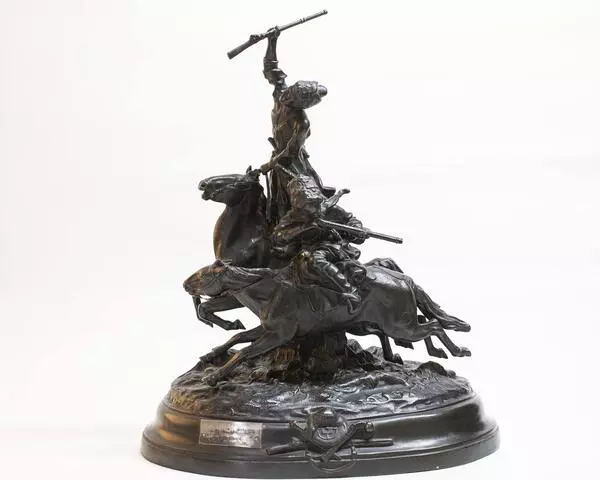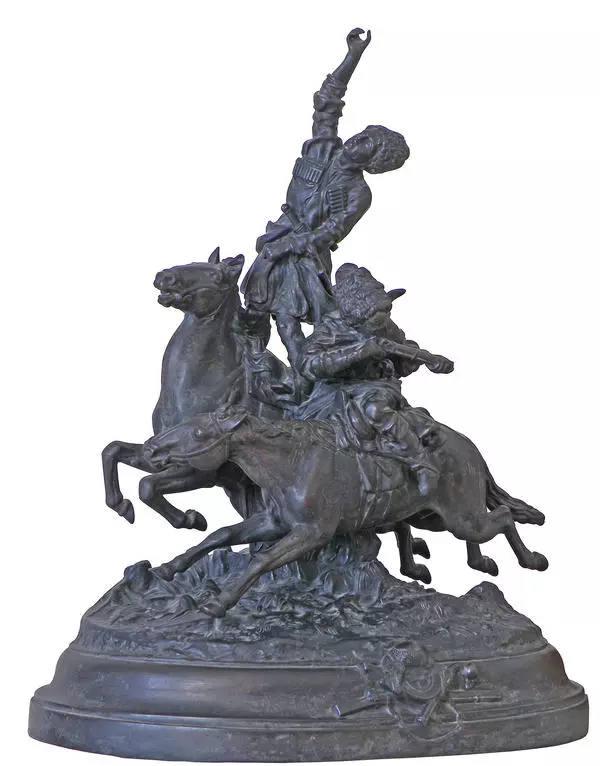Yevgeny Yevgenyevich Lansere (also spelled Eugene Lanceray) (1875-1946) was a Russian and Soviet artist. His father was a sculptor Yevgeny Aleksandrovich Lansere (1848-1886), his sister was a painter Zinaida Yevgenyevna Serebryakova (1884-1967). At the age of 11 Yevgeny Lansere lost his father and was educated in Saint Petersburg in a house of his grandfather, architect Nikolai Leontyevich Benois (1813-1898).
Yevgeny Lansere and his sister Zinaida Serebryakova were the members of the artistic movement ‘Mir Iskusstva’ (World of Art) founded by the theatre patron Sergei Diaghilev and an artist Alexander Benois. The latter was the uncle of Lansere and Serebryakova. The movement was founded in 1898, when the ‘Exhibition of Russian and Finnish artists’ was organized. The members of the movement treated the outdated Academism with prejudice, and at the same time democratism of ‘peredvizhniki’ (members of the Society for Travelling Art Exhibitions) was alien to them. The members of ‘Mir Iskusstva’ were attracted by the art of the previous epochs.
It’s no accident that Yevgeny Lansere turned to the historical genre in his painting “Czar”s daughter Elizabeth Petrovna and preobrazhentsy in corps de garde of the Winter Palace in the early hours of 25 November 1741”. It’s both the influence of ‘Mir Iskusstva’ and the artist’s personal passion for history. Since young years he was interested in the events happening in Russia in the 18th century, and later Lansere created a whole series of works dedicated to this epoch. One of them is exhibited at the Tver Art Gallery.
The events of the Palace coup that took place in 1741 and resulted in Elizabeth Petrovna, daughter of Peter the Great, getting into power, are shown at the painting. For a long time after her father’s death she stayed in the shadow not taking part in the political life. In 1730 Romanov dynasty сut short in the male line, and Anna Ioannovna, daughter of Peter the Great’s elder brother, ascended the throne. She had no kids and left the crown to her grandnephew Ivan Antonovich, who was born in August 1740, and in October became the czar. In such circumstances Elizabeth’s right to the Russian throne was so obvious that she started to worry about her safety. The multiple supporters advised her to proclaim herself an empress. As a result, on November 25th, 1741, having armed herself with the support of the Grenadierial troop of Preobrazhensky Lifeguard Regiment, Elizaveth Petrovna burst into the Winter Palace. Not facing any opponency, she declared herself an empress, while infant Ivan VI and his relatives were arrested.
Yevgeny Lansere and his sister Zinaida Serebryakova were the members of the artistic movement ‘Mir Iskusstva’ (World of Art) founded by the theatre patron Sergei Diaghilev and an artist Alexander Benois. The latter was the uncle of Lansere and Serebryakova. The movement was founded in 1898, when the ‘Exhibition of Russian and Finnish artists’ was organized. The members of the movement treated the outdated Academism with prejudice, and at the same time democratism of ‘peredvizhniki’ (members of the Society for Travelling Art Exhibitions) was alien to them. The members of ‘Mir Iskusstva’ were attracted by the art of the previous epochs.
It’s no accident that Yevgeny Lansere turned to the historical genre in his painting “Czar”s daughter Elizabeth Petrovna and preobrazhentsy in corps de garde of the Winter Palace in the early hours of 25 November 1741”. It’s both the influence of ‘Mir Iskusstva’ and the artist’s personal passion for history. Since young years he was interested in the events happening in Russia in the 18th century, and later Lansere created a whole series of works dedicated to this epoch. One of them is exhibited at the Tver Art Gallery.
The events of the Palace coup that took place in 1741 and resulted in Elizabeth Petrovna, daughter of Peter the Great, getting into power, are shown at the painting. For a long time after her father’s death she stayed in the shadow not taking part in the political life. In 1730 Romanov dynasty сut short in the male line, and Anna Ioannovna, daughter of Peter the Great’s elder brother, ascended the throne. She had no kids and left the crown to her grandnephew Ivan Antonovich, who was born in August 1740, and in October became the czar. In such circumstances Elizabeth’s right to the Russian throne was so obvious that she started to worry about her safety. The multiple supporters advised her to proclaim herself an empress. As a result, on November 25th, 1741, having armed herself with the support of the Grenadierial troop of Preobrazhensky Lifeguard Regiment, Elizaveth Petrovna burst into the Winter Palace. Not facing any opponency, she declared herself an empress, while infant Ivan VI and his relatives were arrested.
